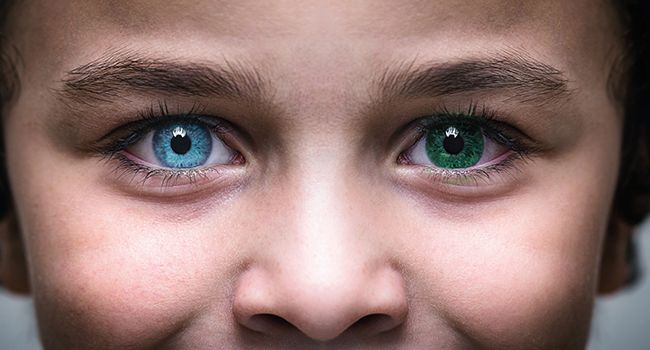
Have you come across people with eyes of two different colours? As per research, six out of every thousand people have this interesting trait called Heterochromia (Source). In heterochromia, the iris of the eye is partly (or completely) multicoloured. For example, one eye is brown and the other eye is blue. So what leads to heterochromia? A pigment called melanin gives colour to the iris. In some cases, heterochromia is caused by the variation in the distribution or delivery of this pigment.
In major cases, heterochromia is genetic. In rare scenarios, heterochromia can occur due to injury or it can act as a symptom of some other medical condition. Let’s look at the major causes of heterochromia along with techniques to address this eye ailment in detail.
Causes of Heterochromia
If a child is born with heterochromia then it is referred to as congenital heterochromia. In most cases of congenital heterochromia, the child does not experience any major pain.
Sometimes causes of heterochromia can be underlying conditions like:
- Von Recklinghausen disease
- Benign heterochromia
- Bourneville disease
- Parry-Romberg syndrome
- Horner’s syndrome
- Sturge Weber syndrome
- Piebaldism
- Bloch-Sulzberger syndrome
If the eye colour changes as an adult (or after infanthood), it is called Acquired Heterochromia. Acquired heterochromia can occur due to the following reasons:
- Eye injury
- Swelling in the eye
- Bleeding of the blood vessels in the eye
- Glaucoma or side-effects of its medication
- Previous eye surgeries
- Neuroblastoma
- Diabetes mellitus
- Eye cancer
Types of Heterochromia
Based on the distribution of melanin pigment in the iris, there are three types of heterochromia:
Complete heterochromia
Complete heterochromia occurs when both eyes have completely different colours. For example, one eye is brown and the other is green.
Heterochromia Iridis
When heterochromia is incomplete (i.e. segmental or central) it is termed as Heterochromia Iridis. Heterochromia Iridis causes only a part of the iris to be of a different colour.
Segmental Heterochromia
In segmental heterochromia, a pie-shaped part of the iris is differently coloured. It can occur either in one or both eyes.
Central heterochromia
Central heterochromia is the most common type of heterochromia. In this type, the iris of both eyes are almost of the same colour and a ring is formed around the pupil. For example: the eyes are hazel with a golden ring around the center.
Treatments for Heterochromia
Congenital heterochromia or heterochromia by birth usually doesn’t need any treatment. If heterochromia is acquired or caused by an underlying illness or injury, the root cause has to be treated.
In case of a sudden change in the eye colour, you should immediately consult an ophthalmologist.
How Centre for Sight can help?
Centre for Sight provides specialized eye care, with highly specialised eye experts and state-of-the-art eye treatment technology. We have experts who can conduct thorough diagnosis of different types of heterochromia and provide honest clinical opinion for the best treatment.Article: Heterochromia: The Mystery Behind Different-Colored Eyes
Author: CFS Editorial Team | Feb 22, 2021 | UPDATED 01:20 IST
*The views expressed here are solely those of the author in his private capacity and do not in any way represent the views of Centre for Sight.
